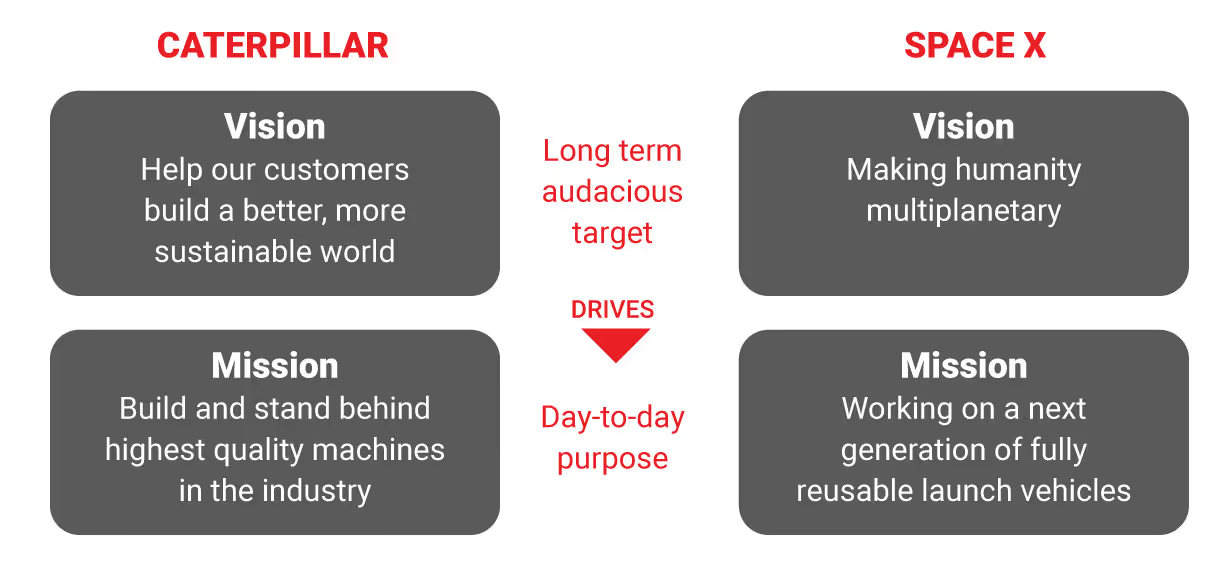Vision: The vital yet overlooked aspect of marketing strategy
In an industry surrounded by vision, why don’t building contractors incorporate it into their own business strategy?

In an industry surrounded by vision, why don’t building contractors incorporate it into their own business strategy?
The key to the successful growth of a construction business is having a vision and a plan to make that happen. I find it ironic that in an industry surrounded by vision, leaders of building companies rarely incorporate it into their own business strategy.
Think about it. From the couple who are excited about remodeling their kitchen to a developer wanting to convert a rural field into a vibrant, thriving community, you are always working with people encouraging you to look beyond the present and envision a future goal, sometimes more aspirational than practical. But as audacious as it is, if that vision is clear and concise, somehow you manage to pull it off.
So why is it that in an industry driven by vision, building professionals rarely give it much thought for their own firms?
When I work with leadership teams of GC’s, contractors, materials suppliers, even architects, they can list out what they do day to day and speak endlessly about what they do to implement their client’s objectives, but very rarely, if ever, can they explain why they do it, and what goals they envision over the next 5 to 10 years.
Establishing a clear vision is beneficial in many ways mainly because it gives you something to aspire to, rather than drifting aimlessly without a solid direction. If you stay focused on what truly matters to your company, you can refine your expertise and establish a mutual purpose behind the work you do every day.
Also, it is vital to attract and retain talent which is so critical these days.The next generation of skilled craftspeople, superintendents, PM's or engineers are much more interested in a company with an upward trajectory mindset based on a compelling vision.

Let’s talk about the difference between a position, mission and vision. Each is individually important and interdependent when developing a strategic business plan.
Your position is a declaration of how your company is different from other similar companies in your industry.
You specialize in tilt up construction. You are the local expert remodeler in historic residential homes. You provide a taco truck every Friday out of love for your employees. It's a unique space away from your competitors that provides value in the eyes of your audience.
Your mission statement is focused on who you are and what you do on a day to day basis.
You guarantee a top quality remodel because you only hire and retain well-seasoned craftspeople. You are early adopters of mass timber in highrise construction, leading the charge for more sustainable building materials and methods. This proclamation you make based on your position gives your team a sense of fulfillment and also guides your business decisions on a day-to-day basis.
Vision, on the other hand, is focused on a big audacious goal that, if you can ever achieve it in the distant future, it would show that your company has arrived at ultimate success and possibly changed the game in the industry.
It gives your company a sense of purpose and direction so that you can scale and grow gradually and intentionally beyond the status quo.

For instance, Caterpillar’s mission is to design, manufacture and sell advanced construction equipment. Its vision however is to contribute to a world in which all people’s basic needs – such as shelter, clean water, sanitation, food, and reliable power – are fulfilled in an environmentally sustainable way.
SpaceX’s mission is to build the best space rockets out there. But its vision is to be the company that puts humans on different planets in order to sustain the species.
Your vision doesn’t need to be that lofty, but having a vision inspires you and gives you energy. It can motivate your team and employees by connecting your heartfelt values with your day-to-day job duties.
I researched the vision statements of the top national construction companies and found pretty much all of them have the same generic drill of sustainability, safety and customer satisfaction. These are all important virtues but they don’t incite passion or excitement. If you are going to create a lasting, inspiring vision you have to dream big. Really challenge yourself to find something bold and disruptive to shoot for.
A good way to develop your vision is to go back to the days when your kid would play 50 questions with you. If you remember, the conversation goes something like this:
Why are you pouring food into the dog bowl?
Because I need to feed the dog
Why are you feeding the dog?
Because he needs to eat his breakfast.
Why does he need to eat breakfast?
Because he’s hungry.
Why does he get hungry?
Because his body is telling him he needs to eat food.
Why does his body tell him he needs to eat?
Because otherwise he will die.
Instead of concentrating on the first superficial, most obvious answer, asking “why” forces you to dig deeper and get to the real motivating reason you are doing something.
For instance, something I always hear:
Our vision is to provide the best customer service in the industry.
Applying the same tactic the answer to why might be:
Because clients appreciate good customer service.
Why?
Because they believe most contractors are non-responsive and don’t communicate well
Why?
Because they don’t train their employees properly and have squishy processes.
And so on.
This hypothetical line of questions uncovers a more compelling vision, which could be,
We aspire to be renowned for taking the time to train our employees to follow our proprietary process, ensuring a smoothly run project every time.
Your vision should be magnetic and exciting, distilling down into one simple statement. Make sure it is clear, concise and straight to the point. And it should be a single, understandable and attainable target.
Think of movie trailers. They are the result of the distillation and pruning of tons of information, until there is nothing left but only the most relevant, exciting and memorable elements, sure to inspire those who are watching.
Think of movie trailers when working on your statement. There isn’t any surplus fluff or hazy content when you view them. They are the result of hours of pruning and refining, adhering to the less-is-more rule until only the most relevant, exciting, and memorable elements remain.
When written well, a vision statement is something that speaks directly to your team so they understand it and come into alignment around it, but only if you put it into practice.
Include it as an intro section to your employee handbook. Post signs around the office and on job sites as a visual reminder. Incentivize them with rewards if you see them doing something that moves the company one step towards that goal.
Your leadership team should refer to it when considering difficult business decisions like accepting questionable project opportunities, investing in equipment that may or may not be necessary or hiring people who may not align with your vision.
It's not not easy to take the time out of your day to distill all of your company’s ideas and goals into a simple and actionable statement, but at the very least it is a valuable exercise in order to inspire your team, give you a compelling outcome to strive for, and propel you to become a more organized, productive and profitable company.

Written by Rusty George with zero help from AI Chatbots.
Rusty George leads a marketing agency serving Seattle and Tacoma area construction companies, subcontractors, engineering and architecture firms, material fabricators and suppliers.
MORE Insights
Unlock the secrets to transforming your construction company into a marketing powerhouse with Louder Builder.

2026 Starts Now. Five Reminders to Strengthen Your Year Ahead

Small Moves Now. Big Wins Next Year
SIGN UP FOR UPDATES
We will send you our latest insights from Louder Builder as they are released.
CONTACT US
Are you ready to begin your project today? Just have a few questions?
Either way, let’s talk.
